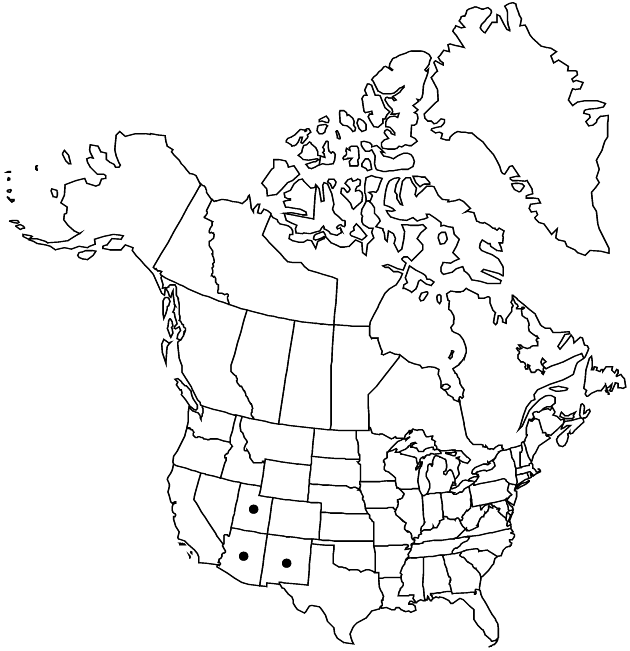Erigeron abajoensis
Brittonia 6: 168. 1947.
Perennials, 5–15 (–24) cm; taprooted, caudices branches relatively thick and short, retaining old leaf-bases. Stems ascending to decumbent (greenish proximally), usually loosely strigose (hairs ascending, attenuate, basal-cells erect), uncommonly hirsute or hirtellous (hairs spreading-deflexed), eglandular. Leaves basal (persistent) and cauline; basal blades usually oblanceolate, 15–70 × 2–6 (–8) mm (bases attenuate), margins entire (apices rounded to obtuse); cauline blades linear to linear-oblong or narrowly lanceolate-oblong, mostly 10–40 × 1.5–4 mm, gradually reduced distally; faces strigose, eglandular. Heads 1–4. Involucres 3.7–5.2 × (5–) 10–11 mm. Phyllaries in 2–3 (–4) series, strigose to strigulose or finely hirsuto-villous, minutely glandular. Ray-florets 35–60; corollas blue to pink or white, 5–6 mm, laminae weakly coiling. Disc corollas 2.5–4 mm. Cypselae 1.5–2 mm, 2-nerved, faces strigose; pappi: outer of setae, inner of 12–20 bristles.
Phenology: Flowering Jul–Aug.
Habitat: Rocky or gravelly open slopes, sagebrush, pinyon-juniper, ponderosa pine, spruce-fir
Elevation: (2000–)2800–3500 m
Distribution

Ariz., N.Mex., Utah.
Discussion
Of conservation concern.
Erigeron abajoensis is a segregate of E. caespitosus, separated from the latter only by its strigose (versus hirsute) stems and leaves and greater tendency for 1-nerved leaves. Further, some populations of E. abajoensis have plants variable in orientation of stem vestiture [both antrorsely appressed and deflexed; e.g., Cronquist 9430, Garfield Co., Utah (BRIT, NY); Heil and Clifford 17919, Apache Co., Ariz. (BRIT, SJNM)] and similar variation in cauline vestiture also occurs in E. caespitosus.
Selected References
None.